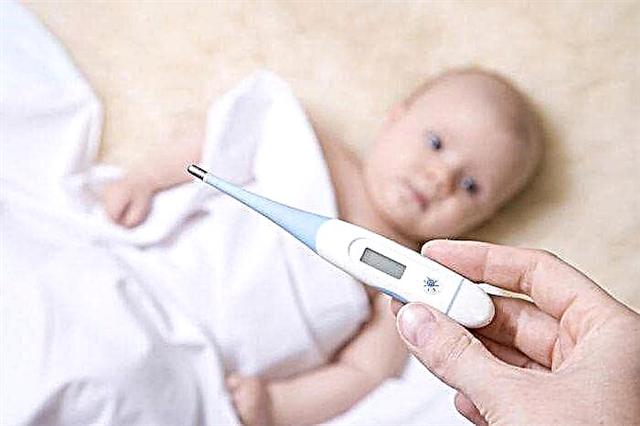Classification of anemias
The most understandable for a wide range of people is the classification of anemia by causes.
- Anemia due to blood loss.
- Anemia due to a violation of the formation of hemoglobin and / or red blood cells.
- Anemia due to destruction of red blood cells.
- Separately, anemia of premature and newborn babies is also distinguished due to the age characteristics of their blood and circulatory system, the conditions of birth.
For the clinician, the classification of anemias according to changes in red blood cells is important.
It helps to determine the type of anemia with a high probability.
| HB concentration (color index (CPU)) | Erythrocyte diameter (μm) | The proportion of reticulocytes (%) |
| Hypochromic: CPU less than 0.86 | Less than 7 - microcytic | Less than 1 - hyporegenerative |
| Normochromic: CPU 0,86-1,05 | 7-7.8 - normocytic | 1-3 normoregenerating |
| Hyperchromic: CPU over 1.05 | More than 7.8 - macrocytic | More than 3 - hyper-regenerative. |
Iron-deficiency anemia - this is hypochromic anemia, microcytic, normo- or hyporegenerative. Refers to the second item from the first classification, because due to a lack of iron, the synthesis of hemoglobin is difficult.

Anemia in history
Signs of anemia could not go unnoticed by the great doctors of antiquity. Both Hippocrates and Avicenna described them in their works.
In the 17th century, the doctor Varandal gave the name of this disease - "chlorosis" due to the pale green color of the skin of patients.
Discoveries
The discoveries of scientists in Europe brought closer the answer to the cause of the disease:
- 1673 Anthony van Leeuwenhoek discovered red blood cells using a microscope invented by him;
- 1713 - French chemists Nicolas Lemery and Etienne François Geoffroy proved the presence of iron in the blood.
In Russia, a little later, the discovery of iron was confirmed. In 1802, a book by the Russian scientist P. A. Zagorskiy "Abbreviated Anatomy or a Guide to Understanding the Structure of the Human Body" was published, where he described an interesting experiment with blood obtained from the liver. The blood was purified and the moisture was evaporated on a fire. The residue obtained from the blood was attracted by a magnet.
In 1962 Max Perutz was awarded the Nobel Prize for the discovery of 3 types of hemoglobin.
In Russia, they studied anemia in the 19th century S.P.Botkin and G. Zakharyin, A.F. Tur and etc.
Treatment history
The first cures for anemia were rust and water.
The military realities of the ancient world, with warriors suffering from bleeding, forced doctors to show observation and ingenuity. So, the ancient Romans noticed that the rusty water in which the weapon was lying helps the soldiers to recover faster. Rust from knives and swords was also mixed into food and drink.
English physician Thomas Sydenham in the 1600s successfully used mineral water with a high iron content in the treatment of patients with anemia.
The first recognized medicine was a half-baked liver.
American doctors D. Minot, W. Murphy and D. Whipple since 1926 began to treat patients with anemia, giving them the liver of animals for food. Thus, 45 patients were saved. For these studies, scientists were awarded the Nobel Prize in 1934. Extracts were also made from the liver and used for subcutaneous injections, which was even more effective.
In 1832, a hypothesis was put forward that the cause of anemia lies in a lack of iron, and in the same year, the French physician Bloud first used pills containing iron sulfate. This gave good results, but his contemporaries did not appreciate his discovery. And until 1926, they tried to compensate for the iron deficiency with plant foods.
Further, the study of the iron deficiency state kept pace with the development of genetics, chemistry, hematological science in general.
Reasons for the development of iron deficiency anemia

1) Generalized causes of iron deficiency in the body at birth:
- premature birth;
- severe and long-term iron deficiency in a pregnant woman;
- impaired blood circulation between fetuses in multiple pregnancies;
- poor circulation between the fetus and the placenta.
2) Insufficient intake of iron from food due to:
- improper feeding of young children;
- unbalanced diet with no meat products;
- increased need for iron (periods of rapid growth (from 1 year to 2 years, puberty), young athletes).
3) Impaired absorption and transport of iron due to:
- chronic diseases of the digestive system with impaired digestion and absorption of nutrients;
- frequent intestinal infections;
- taking some medications;
- food habits;
- helminthic invasion;
- hormonal and oncological diseases.
4) Increased iron loss due to:
- bleeding or hemorrhage;
- profuse menstruation in girls;
- complications in childbirth (important during the newborn period and in the first year of life);
- diseases of the coagulation system.
A decrease in hemoglobin levels due to infections is often noted. This is due to a redistributive iron deficiency. iron from the blood enters the tissues to boost the activity of the immune system.
But it is impossible to use iron preparations against the background of an infectious process, since it is possible to activate the course of the disease due to the fact that bacteria can use iron to maintain their vital activity.
IDA development mechanism
The disease develops, passing through 3 stages in succession.
- Prelate iron deficiency.
There is a depletion of iron depot in tissues (muscles and liver, bone marrow, macrophages), where it is in the form of hemosiderin and ferritin. Hemopoiesis does not suffer at this stage. There is no clinic. In the laboratory, a decrease in serum ferritin below 20 μg / l can be noted.
- Latent.
Laboratory indicators:
- The saturation of the transport protein transferrin decreases below 30%.
- The indicator of the total iron-binding capacity of serum (TIBC) increases more than 70 μmol / l.
- RDW - the range of distribution of erythrocytes by volume increases by more than 14.5%.
At this stage, children may already have anemic symptoms, since the child's brain is especially sensitive to even a slight iron deficiency.
- Iron deficiency anemia itself.
The iron depot is emptied, iron of the erythrocytes themselves begins to be consumed to maintain the vital activity of the cells of the body.
Severity of anemia
Lightweight: hemoglobin - the upper limit is below 110 g / l in children under 5 years old and below 120 g / l in older children, the lower one is 90 g / l.
Moderate severity: hemoglobin 70-80 g / l.
Severe degree: hemoglobin below 70 g / l.
Clinical symptoms of IDA
They are represented by two syndromes.
1. Anemic: due to a decrease in hemoglobin levels and oxygen starvation. In children it is:
- weakness;
- fatigue;
- emotional lability;
- decreased concentration of attention;
- decrease in the rate of growth and mental development;
- fainting;
- dyspnea.
2. Sideropenic, due to iron deficiency in tissues. Observed:
- pathological changes in the skin and its appendages (dry and flaky skin, brittle hair, spoon-shaped nails - koilonychia);
- perversion of appetite and smell (the work of receptors is disrupted);
- damage to the mucous membranes of the digestive system (mucous membranes from the tongue and oral cavity to the lower gastrointestinal tract become inflamed and atrophied) is manifested by abdominal pain, nausea, impaired swallowing, unstable stools;
- disruption of the immune systemleading to frequent infectious diseases;
- muscle tissue is affected - muscle pain, low muscle tone, involuntary urination and constipation appear.
Confirmation of the diagnosis and differential diagnosis of iron deficiency anemia

Diagnostics
The diagnosis is based on:
- Objective examination and collection of complaints by a doctor.
- Laboratory examinations, which are assessed:
- erythrocyte counts (complete blood count);
- biochemical indicators.
In a general blood test
The range of distribution of erythrocytes by volume (RDW): normal 11.5-14.5%. It rises already in the early stages of iron deficiency.
With an expanded clinic.
- The concentration of hemoglobin - decreases less than 120-110 g / l and below (see severity).
- The color index (CP) will be less than 0.85 (hypochromia).
- The indicator of the size and shape of erythrocytes (MCV) is less than 80 fl / μm ^ 3 (microcytes).
- The number of erythrocytes (RBC) is reduced moderately to 3.3 x 10 ^ 12 / l.
- The average concentration of hemoglobin in the erythrocyte (MCHC) is less than 31 g / l.
In a biochemical blood test
- Serum iron level (less than 11.6 μmol / L).
- The degree of saturation of transferrin with iron (less than 25%).
- Serum ferritin level (less than 120 μg / L).
- The total iron-binding capacity of blood serum is less than 50 μmol / l.
And to clarify the cause of IDA, additional examinations are already being carried out. Laboratory, instrumental, consultations of narrow specialists.
Differential diagnosis
Differential diagnosis is carried out with the following diseases.
- Deficiency anemia. More often with B12 deficiency anemia. Its differences from IDA in hyperchromia, megalocytes, a more severe decrease in hemoglobin and erythrocytes. In the clinic, there are disturbances in sensitivity, paresis, the appearance of pathological reflexes, and a yellowish skin tone.
- Thalassemias - a group of hereditary diseases where there is a mutation in the hemoglobin synthesis gene. They are distinguished by a characteristic family history, a special appearance of patients, damage to the liver and spleen, and pathology of the skeletal system. In the blood, in contrast to IDA, the level of iron is increased.
- Anemia associated with chronic diseases (as a rule, there is an underlying disease). These can be infections (tuberculosis, osteomyelitis), diseases of the liver and other digestive organs, connective tissue, tumors, endocrine diseases. With such anemias, there is a normal or increased level of ferritin and a decrease in TIBC.
Complications of IDA
This is why it is worth taking a closer look at the health of children and expectant mothers.
- Intrauterine iron deficiency in the fetus causes irreversible disturbances in the formation of structures of the brain and the peripheral nervous system, in particular, the synthesis of myelin protein is disrupted. As a result, in the future the child will lag behind in psychomotor development.
- Iron deficiency that occurs in children from 6 months. up to 2 years (a critical period for the completion of the formation of the central nervous system), negatively affects the development of speech, intelligence.
- Iron deficiency disrupts the dopamine system, which is responsible for mood and behavior. Therefore, children from early childhood are characterized by increased irritability, anxiety, anxiety and later experience difficulties in social adaptation.
- Decreased physical activity in children.
- The body's immune system is weak, as a result - frequent infectious diseases.
Treatment
It is impossible to cure IDA with a diet. She is treated only with iron preparations.
Methods for treating IDA are as follows.
- Taking iron preparations inside.
- The introduction of iron preparations intravenously.
- Transfusion of erythrocyte mass.

Taking iron supplements
The main one is the first option. Blood transfusion is done for health reasons. Parenteral administration is carried out only in a hospital with severe forms of anemia, during operations on the gastrointestinal tract and when it is impossible to take drugs by mouth.
Iron preparations for oral administration are divided into two groups.
- Saline (Aktiferrin, Sorbifer, Ferlatum, Tardiferron, Totema).
- Containing iron-hydroxide-polymaltose complex (Maltofer, Ferrum Lek).
The advantages of the first group: are quickly absorbed and remission occurs faster - after 3-4 months. from the beginning of therapy, cheaper.
The advantages of the second group: high safety (the risk of overdose is minimal), better tolerance, little contact with food.
Comparative studies of these groups were carried out and came to the conclusion: children of the first 6 months of life, in children with allergic diseases, with gastrointestinal tract pathology, with mild forms of anemia - it is preferable to use drugs with an iron-hydroxide-polymaltose complex.
At an older age, with anemia of 2-3 degrees, salt preparations are more effective.
In children with impaired intestinal biocenosis in the treatment of anemia, along with iron preparations, eubiotics and enzymes should be used to reduce the risk of dyspepsia due to the possible activation of opportunistic flora during therapy.
Therapy rules
- A gradual increase in dose over 2-3 days, starting from 1-3 mg / kg in babies and from 50 mg in adolescents.
- The calculation of the therapeutic dose depends on the severity and body weight.
- The course of treatment for the normalization of hemoglobin continues, depending on the severity of 3 months. up to 6 months on a maintenance dose to replenish the iron depot.
- Iron preparations are taken 1-2 hours before meals, they cannot be combined with milk, coffee, tea and medications.
Monitoring the effectiveness of therapy
- After 10 days, the level of reticulocytes rises.
- After 3-4 weeks, the hemoglobin level rises by 10 g / l and hematocrit by 3%.
- Symptoms of anemia disappear after 1-2 months.
- Recovery to normal serum ferritin in 3-6 months.
Diet therapy

For children who are breastfed, the mother's nutrition is adjusted.
The first complementary food is introduced 1 month earlier, starting with vegetables. During the first month, beef liver is also gradually introduced, mixed into vegetable puree.
From 2 months, fruits and minced meat are introduced, then porridge (excluding semolina and rice).
For formula-fed children, adapted formulas are selected, limiting or removing cow and goat milk from the diet.
The protein in cow's milk causes increased blood loss through the intestines. There is very little folic acid in goat milk, which, when fed with it, leads to its deficiency and the development of B12 and folate deficiency anemias.
In older children, they increase the proportion of protein in food by 10% at the expense of animal products.
The amount of fat is limited.
The proportion of fresh fruits, vegetables, juices is increased, mineral waters with a high iron content are introduced.
The following foods reduce iron absorption: tea, coffee, food preservatives, salt, legumes, nuts, spinach, and eggplant.
Vitamin therapy
Vitamins improve the absorption of iron: Ascorbic acid and vitamin E. They can be taken simultaneously with iron preparations.
Also B vitamins, minerals (manganese, zinc and copper).
Multivitamin complexes are difficult to select, because they usually contain calcium (it reduces the absorption of iron) and additional iron. Therefore, it is better to take these groups of vitamins separately. There are also combined iron preparations with these vitamins and minerals (Sorbifer, Fenuls, Totema). The choice is up to the doctor, who takes into account the age, weight of the child and the course of the disease.
Mode
- Prolonged outdoor exposure.
- Gentle regimen: limiting physical activity (for older children, exemption from physical education and sections until recovery), additional hours of sleep. An additional day of rest can be provided for schoolchildren. Toddlers, if possible, limit visits to kindergarten, protect them from colds.

Traditional methods of treating anemia
They are auxiliary means. Take into account the presence of allergies in children.
Use the following.
- Bee products: pollen, bee bread, honey are especially valuable. They are rich in vitamins and amino acids.
- Phyto-picks, which include nettle leaves, string, strawberry and black currant.
- Rosehip decoction.
Prevention
Adequate nutrition is the primary prevention of anemia.
- All pregnant women, especially with repeated pregnancies, must be prescribed preventive doses of iron, a healthy lifestyle and good nutrition.
- Feeding children with breast milk (its uniqueness is that iron in it is associated with lactoferrin, which ensures better absorption than from milk formulas).
- When artificial feeding, use adapted milk formulas.
- Timely introduce complementary foods no later than 6 months.
- Adequate nutrition for children, taking into account their age and physical activity. Remember that during adolescence, the need for iron increases by 40%.
- Children at risk should receive a prophylactic dose of iron in the amount of 50% of the therapeutic dose (1-2 mg / kg) for up to 18 months. It:
- children with low birth weight;
- premature babies;
- children who are artificially fed with unadapted formulas.
- Periodic monitoring of hemoglobin in children from:
- families of vegetarians;
- a frequently ill group;
- athletes;
- families with low social status.

Conclusion
Iron deficiency anemia is a common problem in pediatrics. Whether or not it appears in your family depends on the lifestyle of parents and children, on the nature of the diet, on the attentiveness of parents to themselves and their children. This disease is possible, necessary and easier to prevent than to cure. And if this diagnosis is nevertheless made, then it is necessary to take a responsible attitude to the examination and the therapy prescribed by the doctor.
Literature
- Manual on laboratory diagnostic methods 2007, Publishing house "Geotar-Media".
- N. Shabalov Childhood Diseases Volume 1 of 2004 "Peter".
- Pediatrics. National guide v. 1. "Geotar-Media" 2009. Moscow.
- Mikhailov I. B. Methodical "Iron deficiency states - the choice of drugs." St. Petersburg 2014 Library of the Pediatric University.
- Papayan A.B., Zhukova L. Yu. "Anemias in children" Peter 2001
- N. Korovina "Iron deficiency anemia in children" Moscow 1998
- Journals “Pediatrics. CONSILIUM MEDICUM "No. 2 2013G AND No. 4 2014
- Journal "Bulletin of the Moscow Scientific Urban Society of Therapists" September 2008, No. 18.
- Kvetnoy I.M.From Hippocrates to Humetren. - M .: University book.



